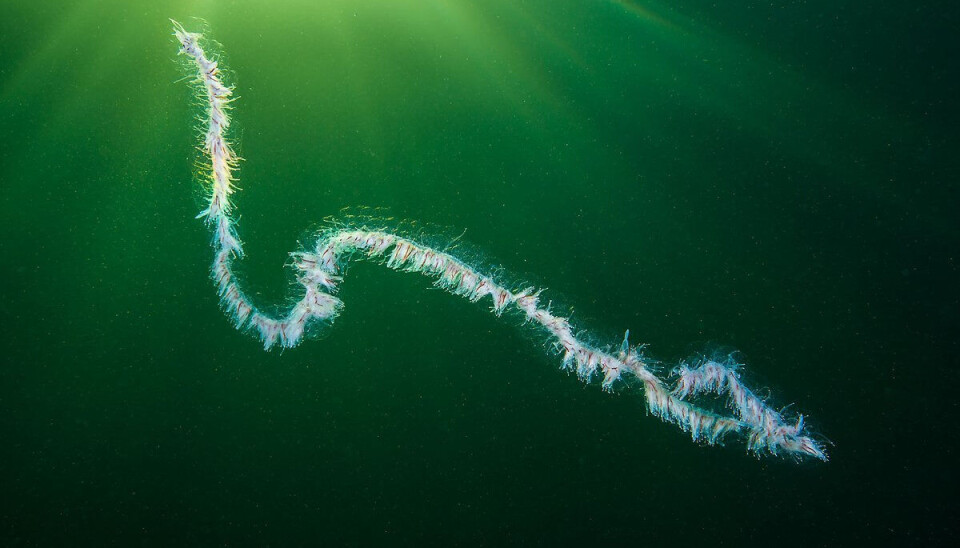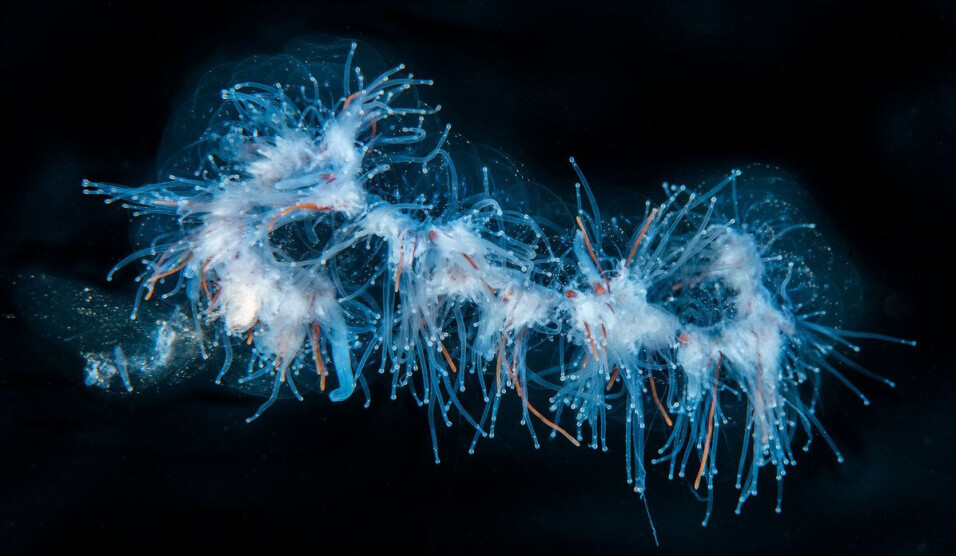THIS ARTICLE/PRESS RELEASE IS PAID FOR AND PRESENTED BY the Institute of Marine Research - read more

Researchers have received over 100 observations of the dangerous string jellyfish in Norway
This colonial jellyfish can reach lengths of up to 30 metres and it can be fatal to farmed fish. Researchers now want help from the public to record observations.
Through the Marine Citizen Science (Dugnad for havet) portal, members of the public can report any interesting things they observe along the coast. So far this year, 110 observations of string jellyfish have been reported.
“But the big increase in reports only began in September–October,” marine scientist Tone Falkenhaug says.

From the Oslofjord to Troms
This is the same situation as we were in last autumn.
“Of the past 20 years, only last year had similarly high levels to this year,” Falkenhaug says.
The string jellyfish is an Atlantic species, and the researchers believe that it comes to the coast with inflows of Atlantic waters.
“We have received reports of observations along the whole coast, from the Oslofjord all the way up to Troms. Over the past week, we have received most reports from Trøndelag,” she says.
Like other jellyfish, string jellyfish can appear very suddenly, and then disappear for a number of years.

Killed many farmed fish in 1997 and 2001
The string jellyfish is a colonial jellyfish that can reach lengths of up to 30 metres. Within the colony, individuals have different roles. The ones whose job is to catch food or defend the colony have stinging cells.
“This means they may sting and cause harm to farmed fish,” Falkenhaug says.
If a colony hits a cage, it gets broken up, and small bits of jellyfish, including the stinging cells, may enter the cages.
On two previous occasions, string jellyfish have caused mass mortality events at fish farms. In 1997, jellyfish killed 12 tonnes of salmon, while 600 tonnes of fish died in 2001.
“That’s why we try to keep an eye on this species of jellyfish,” Falkenhaug says.

The researchers need help
Doing that, however, is not easy because jellyfish are difficult animals to study.
“This is mainly because they are made of jelly-like matter. It makes jellyfish hard to catch using normal gear, because they break up so easily,” Falkenhaug says.
This is why marine scientists need help from the general public.
“The Marine Citizen Science portal is a good tool. In addition, we have received great help from divers, as well as from the aquaculture industry, which has spotted these jellyfish in the vicinity of their farms,” she says.

In short: if you see a string jellyfish, report your observation to the Marine Citizen Science portal.

This article/press release is paid for and presented by the Institute of Marine Research
This content is created by the Institute of Marine Research's communication staff, who use this platform to communicate science and share results from research with the public. The Institute of Marine Research is one of more than 80 owners of ScienceNorway.no. Read more here.
See more content from the Institute of Marine Research:
-
These whales have summer jobs as ocean fertilisers
-
Have researchers found the world’s first bamboo coral reef?
-
Herring suffered collective memory loss and forgot about their spawning ground
-
Researchers found 1,580 different bacteria in Bergen's sewage. They are all resistant to antibiotics
-
For the first time, marine researchers have remotely controlled an unmanned vessel from the control room in Bergen
-
New discovery: Cod can adjust to climate change – from one generation to the next




































